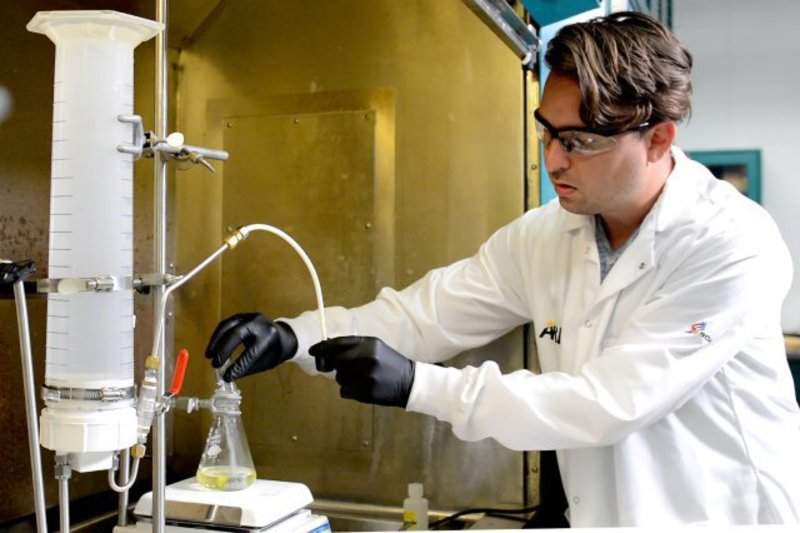
.jpg)
US Army Research Laboratory (ARL) scientists have developed a nano-galvanic aluminium-based powder that produces hydrogen when added to urine.
According to researchers at the ARL, the nano-galvanic aluminium-based powder produces hydrogen when combined with water or any liquid containing water.
The research team has observed that the nano-powder based on aluminium releases hydrogen from the urine at a much higher rate than with ordinary water.
ARL researcher Dr Kristopher Darling said: "What we do as army scientists is develop materials and technology that will directly benefit the soldier and enhance their capabilities.
"We developed a new processing technique to synthesise a material, which spontaneously splits water into hydrogen."
Hydrogen, which is available in plenty in the universe, has the potential to power fuel cells and provide energy to future soldiers.
The energy-efficient fuel cells are capable of generating electricity quietly and without pollution.
According to a Department of Energy's website, the hydrogen used to power the fuel cells can come from a variety of sources.
ARL researcher Dr Anit Giri said: "We have calculated that 1kg of aluminium powder can produce 220kW of energy in just three minutes.”
The team is still investigating why urine causes a faster reaction, but it may have something to do with the electrolytes and the acidity of the liquid.
"It's unique because the rate of the reaction is so efficient and extremely rapid from such a small volume of material," Darling said.
The team, along with other researchers at the laboratory, including the Sensors and Electron Devices Directorate, is working to discover how to harness the material as a potential energy source.
ARL director Dr Philip Perconti stated that the discovery 'may find great utility for forward deployed troops who need a compact and lightweight energy source'.
Image: Army researcher Anthony J. Roberts adds one gram of aluminium nano powder to urine to release hydrogen from a chemical reaction. Photo: courtesy of David McNally, ARL Public Affairs.



